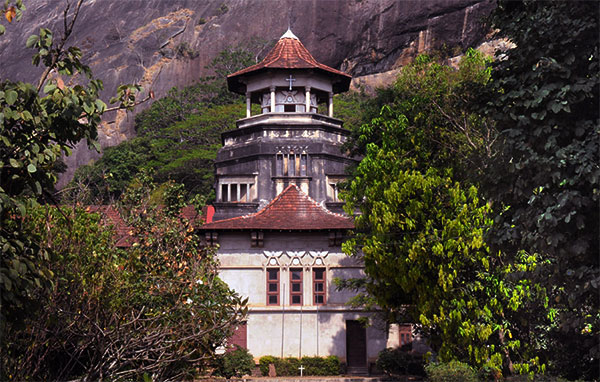
The Wayamba Province and Kurunegala District in Sri Lanka are both headquartered at Kurunegala. Although Kurunegala was strategically positioned in the heart of other imposing strongholds like Yapahuwa to the north, Dambadeniya to the south, and Panduwasnuwara to the east before it became a royal capital for barely 50 years, from the end of the 13th century to the beginning of the next.
Ethagala, a rock with a height of 316 meters, dominates the town, which is situated 116 meters above sea level. Ethagala has an elephant-like form. It serves as a transportation hub and is connected to key regions of the nation by multiple major roadways and a train station. About 94 kilometres separate Kurunegala from Colombo and 42 km separate Kurunegala from Kandy.
The bulk of the people who live in Kurunegala are Sinhalese. The Sri Lankan Moors, Sri Lankan Tamils, Burghers, and Malays are other ethnic communities. All regions of the city are populated by people of ethnic minorities, although Teliyagoing to and Wilgoda also have sizable Moor and Tamil populations.
During the 13th and 14th centuries, Kurunegala served as the fifth capital of the island. It only served as the island’s capital for around 50 years. After assuming the throne in 1287 and ruling until 1293, King Parakrama Bahu III turned the region into a lovely city.
King Kings Buvanekabahu II (1293–1302) and King Parakramabahu IV succeeded King Parakramabahu III after his death (1302–1326). The final monarch of ancient Sri Lanka, King Buwaneka Bahu III, ruled the nation from Kurunegala between the years 1326 and 1335. Vijayabahu V, who succeeded to the throne in 1335, chose Dambadeniya and Yapahuwa as the nation’s capital cities instead of Kurunegala.
Even yet, the city continues to occupy a significant position on the island of Sri Lanka and is currently one of the most vital cities for the nation’s economy. It is the capital of the North-Western province and is the largest city between Colombo and Anuradhapura.
Activities in Kurunegala
Kurunegala Lake

Kurunegala Lake is located in North Western Sri Lanka near to Kurunegala North. Kurunegala Lake is 3.68 kilometers long. It is often referred to as Kurunegala tank or Rantalia Lake. It is a beautiful body of water that is close to the main city yet away from the traffic of the metropolis.
As there are certain tales surrounding this tank related to Vathhimi Bandara, a prince born to a Muslim consort of King Buvanekabahu I (1272-1284 A.D.) or Vijayabahu IV [(1270-1272 A.D.) Borup et al., 2019], Kurunegala Wewa is also known locally as Ranthaliya Wewa.
The people of Kurunegala could be said to depend on Kurunegala Lake for their own existence. It improves the town’s natural attractiveness while also providing water for farmers. The lake is located in the city’s center and takes up a sizable portion of the area. Over the past several years, Kurunegala Lake has undergone renovations. Today, it is surrounded by a lovely, manageable, and well-kept greenery.
When the lake is filled with freshwater following a rainstorm, it creates a breathtaking sight over the city. The contemporary promenade around the lake offers a seductive setting for a nighttime stroll.
The Gale-Bandara cult’s history and its hidden riches
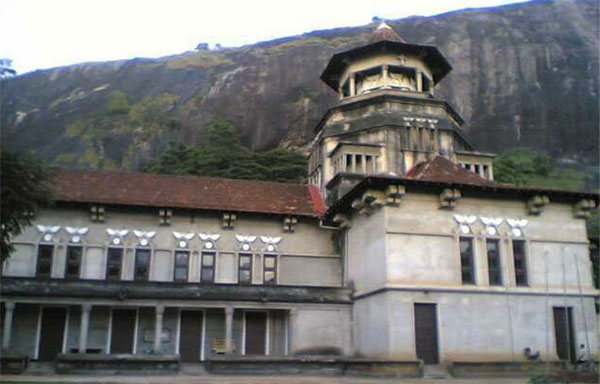
Legend has it that when Vathhimi was alive, a treasure in the shape of a golden pot started to float on the Kurunegala lake, and all of his attempts to obtain it ended in failure (Borup et al., 2019). According to legend, ritual experts (Kattadiyas) hired by Vathhimi to reclaim the riches were slain when they failed to seize it (Borup et al., 2019). Elites in Sri Lanka who believed Vathhimi was planning to gradually exterminate the Sinhalese population beginning with the Kattadiyas were finally taught to dread her after this incident (Borup et al., 2019).
Vathhimi was invited to a Pirith chanting ceremony on the summit of Ethugala, which is situated at the edge of the Kurunegala lake, in order to prevent this as well as to end the non-Buddhist ruling. Vathhimi was led to believe that by taking part in this ceremony, he would be able to recover the treasure floating on the lake (Borup et al., 2019). Without knowing anything, the avaricious Vathhimi attended the ceremony as the primary guest and was seated on a special platform erected up against the rock cliff (Borup et al., 2019). At midnight, a team of covert operatives tasked with this mission extracted Vathhimi off the rock.
Legend has it that after his murder, Vathhimi was born as a demon and started terrorizing the local populace (Borup et al., 2019). The protector of Sri Lanka, the goddess Kataragama, visited this demon and offered to turn him into a god provided he stopped harming humans (Borup et al., 2019). The demon concurred, and a shrine bearing the name Gale-Bandara Devalaya was subsequently constructed in his honor.
King Dutugemunu’s silver mine, Ridi Viharaya
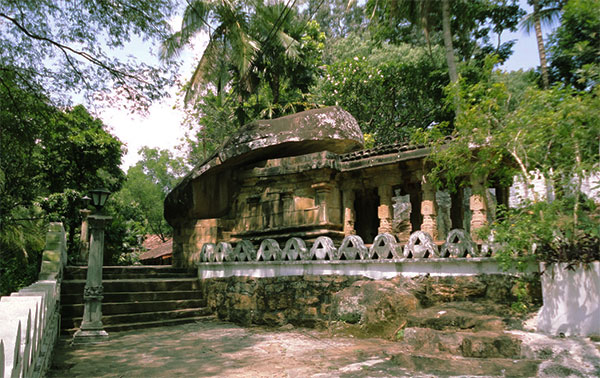
The Ridi Vihara, located on a granite monolith, is around 20 kilometers away from the Kurunegala. The 200-step rock-cut staircase that leads to the temple must be climbed by worshippers. As a sign of appreciation for the monks, King Dutugemunu reportedly built it in the first century BC. The current temple, however, was built in the 18th century after being neglected for a number of years. King Kirti Sri Raja Sinha was responsible for its reconstruction.
The most well-known Buddhist temple in Kurunegala, Ridi Vihara, is regarded as a must-see attraction. It houses an excellent collection of wood and ivory carvings and a priceless collection of paintings. These arts and crafts are thought to have started in various historical eras. These are a few of the precious pieces of art created by artisans of one of the most developed civilizations—the Sinhala Buddhist civilization—which once flourished on par with other major civilizations like the Roman and Greek.
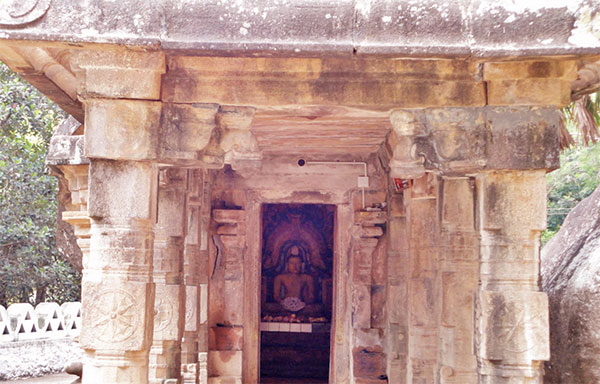
At the location where silver ore was discovered and used by King Dutugemunu to construct Ruwanweli Dageba at Anuradhapura, Ridi Viharaya, also known as the Silver Temple, was constructed.
Follow the Kandy-Kurunegala Highway, take the Mallawapitiya exit, and then travel for about 13 km to reach the Ridi Vihara. The Ridi Vihara, which is hidden beneath a rock outcrop that is about 200 feet high from the surroundings, can be found after traveling about 2 km.
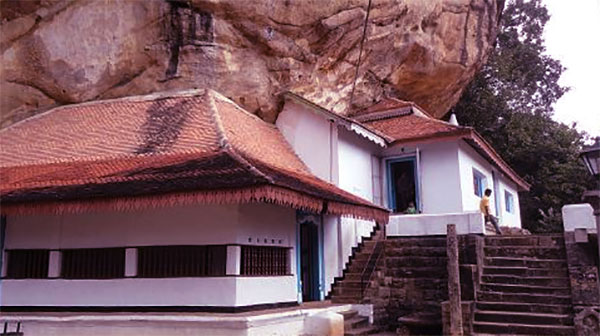
A significant Raja Maha Vihara in the Cultural Triangle is Ridi Vihara. There are caves with Brahmin inscriptions that contain historical information about this monastery complex. They are ancient, dating to the second and third centuries BC. Many Arahaths are thought to have lived in these caves during the reign of Arahath Mahinda; there are about 25 of them near Ridi Vihara and Rambadagalla. The chieftains of the region gave the caves to the Sangha after preparing them by cutting into the rock.
The Ridi Vihara temple was later constructed by King Dutugemunu, and information concerning its building is mostly known through the historical chronicle Mahavamsa, as well as from sources like the Ridi Vihara Asna and folklore.
There are numerous incidents connected to how this Ridi Vihara temple came to be, which is of considerable interest.
Anuradhapura served as the capital of Sri Lanka during the reign of King Dutugemunu (161–137 BC), and there was a highway leading to the nearby Hill Country (Malaya Rata). Only after the temple was constructed was this location given the name Ridigama.
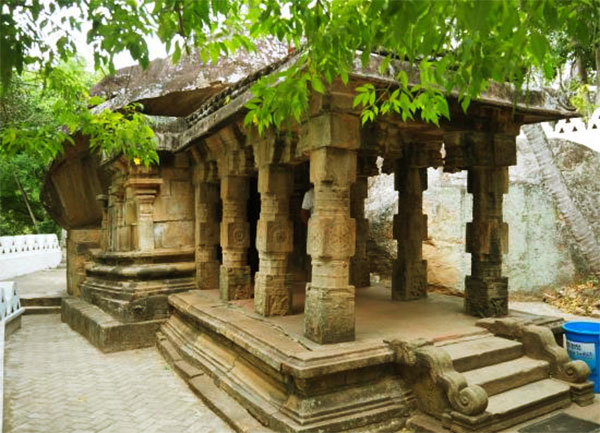
A merchant was passing through this region at the time, pulling his goods behind oxen. He found a Sweet Jackfruit while he was here resting and gave it to an Arahath Thero who lived here. After eating the fruit for his supper, the Thero gave the merchant the go-ahead to continue. The merchant came uncovered a Silver Ore inside a cave while passing by it close. After taking a piece of silver, he traveled to Anuradhapura and told the King the story of how he discovered the silver.
The Silver was delivered to the kingdom by the King after sending his Ministers there. The Ruwanweli Maha Stupa, which was being built at the time, was built by him using the silver. The Silver Cave, also known as Rajatha Lena or the Silver Cave, was home to a shrine that the king erected as an act of appreciation. The temple, also known as Ridi Vihara or the Silver Temple, was located in the village of Ridigama.
Arankele Forest Monastery
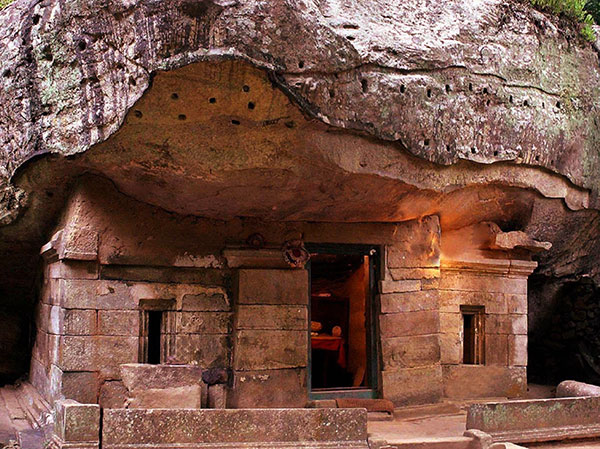
Arankele Monastery, a cave monastery perched on a forested slope in Sri Lanka, dates back to the sixth century. Openings and clearings produced by the ongoing operation of clearing scattered debris to excavate the ruins and re-erecting the fallen ruins are strewn throughout the heavily forested terrain filled with enormous hardwood trees.
A group of unmanmade rock caves that were originally used by monastic monks for shelter and meditation can be found on the slopes of the hill where Arankele Monastery is located in Sri Lanka. With the exception of the drip ledges, the exterior is still unfinished, but the inside walls are nicely lime-plastered.
It was the location of a former forest monastery that served as the austere home of a group of reclusive monks who were drawn to the area by its isolation and seclusion. It has been determined that the structure at the entrance to the Arankele site is a Jantagara, or hot water bath, with measurements of 100 feet long and 60 feet wide. Additionally, there were remains of grinding stones that had once been used to create herbal remedies. Long meandering roads, ponds, and meditative promenades are some of the other remains that have been located.
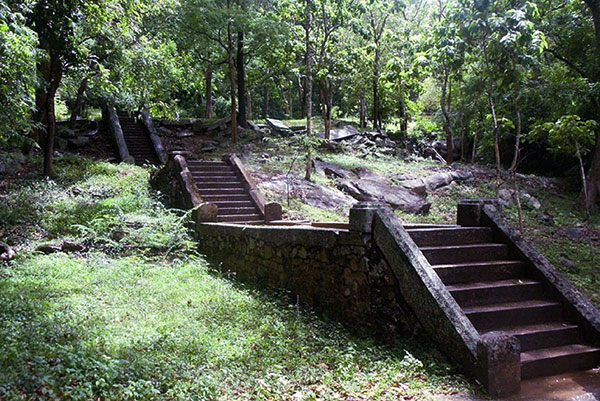
Long paths meandering through the thick forest lead to stone-carved drip-ledges and caves used for meditation, alms-giving rooms, and bathing ponds, which bear witness to the superb craftsmanship of the craftsmen of that time and place.
The existence of meditation halls, stone-faced double platform buildings, and ambulatories for the austere Buddhist monks residing in Sri Lanka’s Arankele Monastery has been disclosed by ancient stone slab inscriptions written in Brahmi script. The entrance porch to the east is connected to the platforms along the east-west axis by a huge monolith. The smaller of the two platforms of this structure, whose roof is supported by columns, appears to be partitioned into monks’ cells.
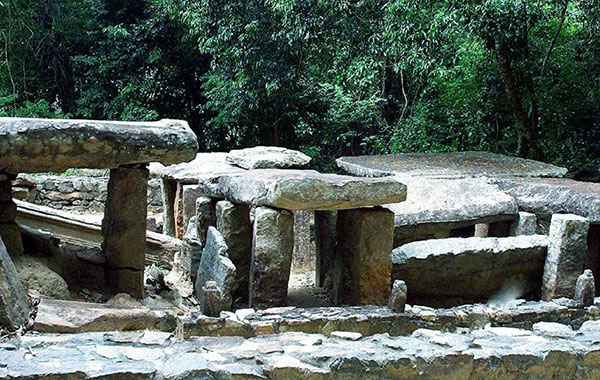
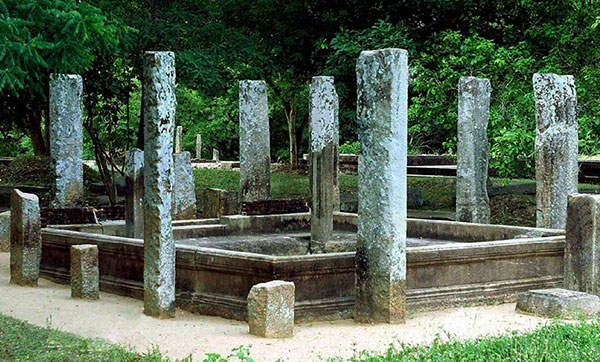
Although the purpose of the two platforms has not yet been established, some researchers believe they were used for instruction, rites, and meditation.
The structure had been constructed without any pretense of ornamentation in keeping with the extreme austerity and austere religious practices of Arankele Forest Monastery. Also absent from this location are the stupas, shrines, and statues that might be found in the old urban monasteries. The presence of urinal stones with carved decorations is the exception to the austere construction. The reason behind the custom of painting urinal stones is unknown.
Baths with hot water and grinding stones at the Arankele Monastery in Sri Lanka
The biggest hot water pond in Sri Lanka is located at Arankele Monastery. It is approximately 60 feet wide and 100 feet long. The remains of the grinding stones that were once used to create Ayurvedic medicines are also visible. All of these remains that are currently being discovered attest to the presence of a sizable Ayurvedic hospital that was housed within the monastery.
The Ancient Kingdom of Yapahuwa
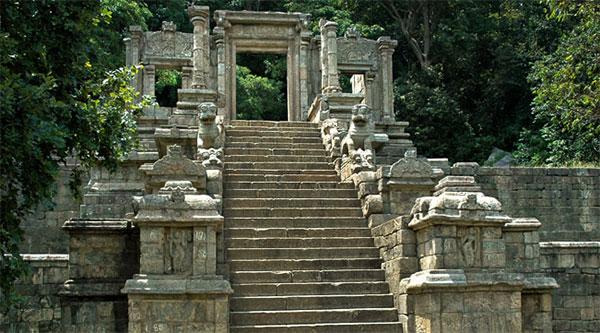
From 1273 to 1284, Yapahuwa Sri Lanka’s Citadel (formerly known as “Yapawwa”) served as the nation’s capital. A Rock Fortress, Royal Palace, and Buddhist Temple made up the Yapahuwa Complex, which was situated halfway between Anuradhapura and Kurunegala. General Subhapabbota (Subha) used Yapahuwa as a military camp circa 1215 AD until King Bhuvenakabahu left Polonnaruwa in 1272.
Yapahuwa was built on a granite cliff that abruptly rose over a hundred meters above the nearby low-lying plains, albeit on a smaller scale than the Sigiriya Rock Fortress. The Yapahuwa Fortress is built at a lower level than the Sigiriya Rock Fortress, which is perched on the peak. The outer defences included a moat, two ramparts, and a crude semicircle. A high stone wall surrounded by a moat was part of the inner fortifications. According to legend, the King’s palace, the Temple of the Tooth, and other administrative structures were situated inside the inner wall, while the residences of the King’s subjects were situated between the inner and outside walls. These fortifications’ remnants can still be seen.
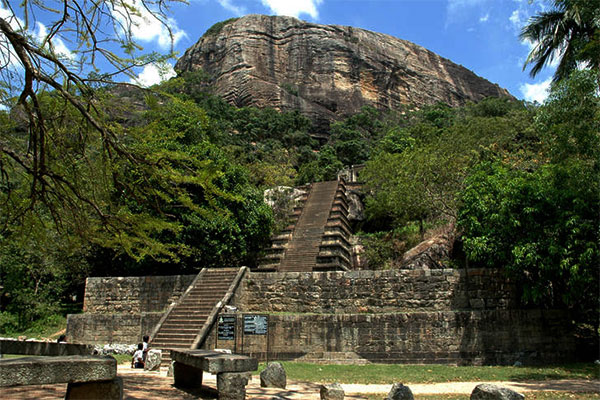
The elaborate staircase that leads steeply up to the palace is the centerpiece of the Yapahuwa complex. The bottom flight, out of the three that were there when it was in operation, has been changed to cement stairs. However, the top tier is an incredible display of the skilled craftsmanship at the time. There are statues of goddesses, goggle-eyed stone lions, elephants, dwarfs, Makara Toranas (dragon arches), and elephants. Even the windows and doors have elaborate carvings. One of the musicians is depicted playing a Kandyan drum, and there are dancers and musicians carved onto the panels that surround the windows. In actuality, this is the first example of this well-known musical instrument from Sri Lanka.
The magnificently built entryway that originally led into the Temple of the Tooth may be seen at the top of the stairs. As hardly much of it is left at the moment, one must be content with taking in the magnificent view of the surrounding low plains from the palace.

A must-see location is the Yapahuwa Museum, which is to the right of the building. One of the most significant displays is a superb stone window at the top of the steps, replete with its elaborate and beautiful lattice work that has an almost Arabian appearance.
A restored cave temple with some intriguing artwork and even some Brahmi inscriptions is located behind the Yapahuwa Museum. It is noteworthy to notice that some of the other works of art are similar to those found in India’s old Buddhist sites such as Ajanta and Alchi. One may see wooden Buddha images and a solitary bronze image among other things.
There is evidence that King Buwanekabahu’s kingdom had close diplomatic ties with China. Early digs turned up several pieces of Chinese ceramics, and specialists have judged that they are among the best specimens of their kind ever found in the country.
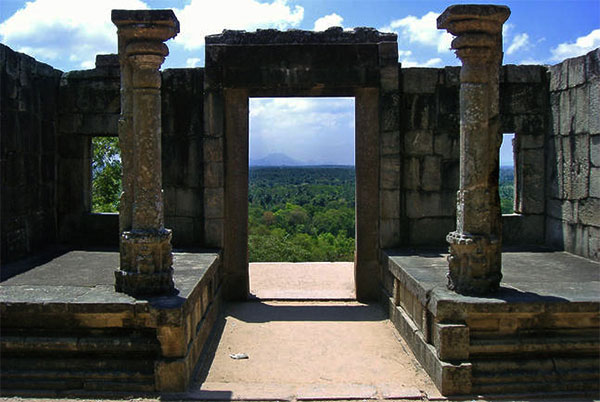
Yapahuwa was initially used by Senapathi (General) Subhapabbota as a military station (Subha). The Sinhala kingdom was in political disarray in 1215 AD. Sensing an opportunity, the South Indian King Kalinga Magha (reign 1215–1236) organized an invasion of Sri Lanka with close to 24,000 soldiers. Subha was able to stop Magha’s (Magha the Tyrant) soldiers from moving south from Yapahuwa.
King Buwanekabahu I fled from Polonnaruwa in subsequent years due to additional Dravidian invasions from South India, bringing the Sacred Tooth Relic with him in 1272.
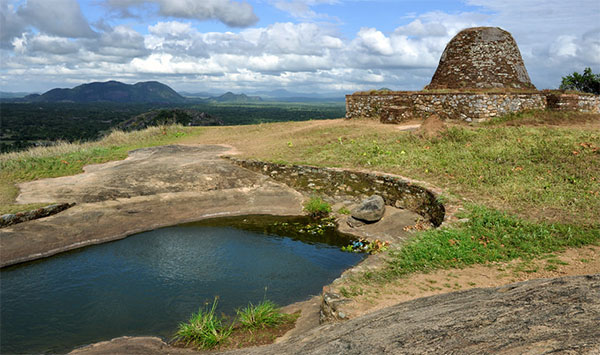
As a result, Yapahuwa was designated as the nation’s capital and remained so until King Buwanekabahu passed away in 1284.
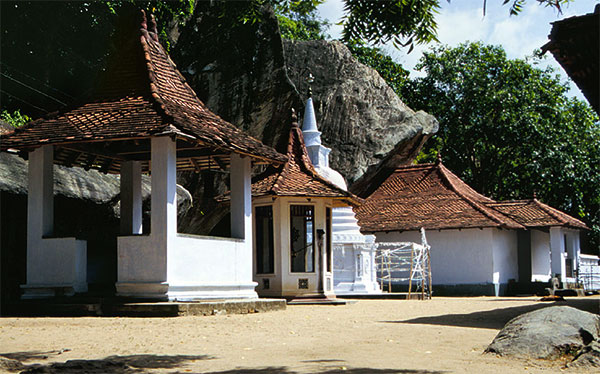
The Pandyans of South India invaded the island once more after the death of King Buwanekabahu I. They succeeded in capturing the Sacred Tooth Relic, which was stored at Yapahuwa, during this expedition. Yapahuwa Rock Fortress had been abandoned by this time. Buddhist monks and ascetics began to live there as of that point.
In the North Western Province’s Pahala-Visi-Deka-Korale, Wanni Hatpattu, is where you can find the Yapahuwa Rock Fortress. The Maho Railway Station is only approximately 4 kilometers distant, giving travelers even another transportation choice. From the Station, there is a bus service to Yapahuwa, but for the more daring, there is an exciting stroll through the breathtakingly beautiful scenery.



